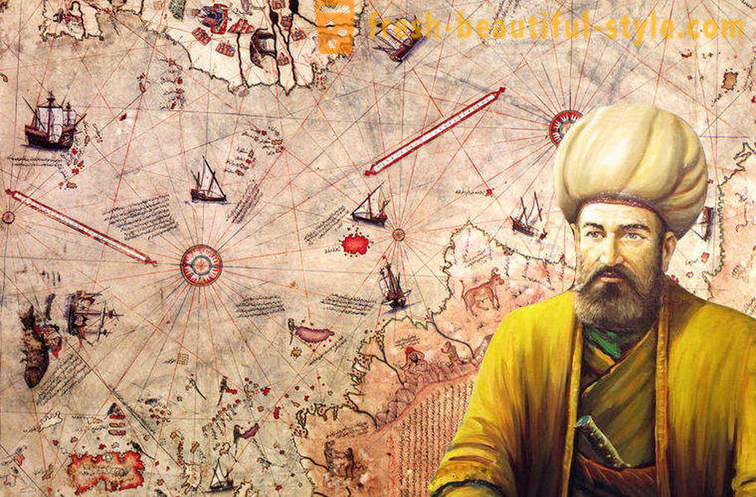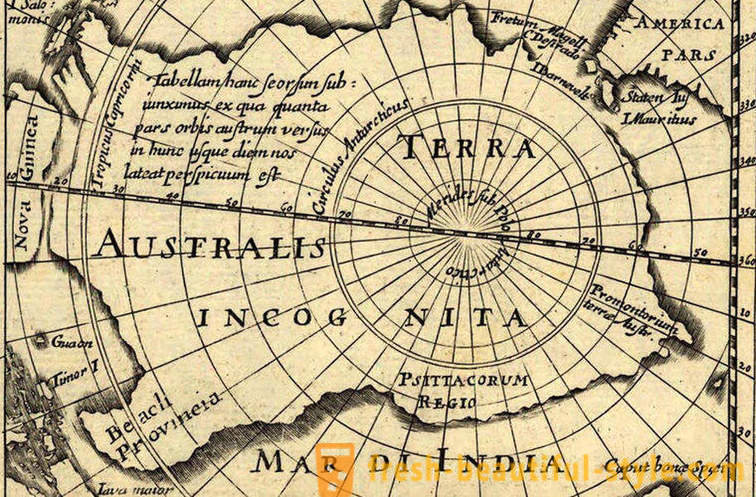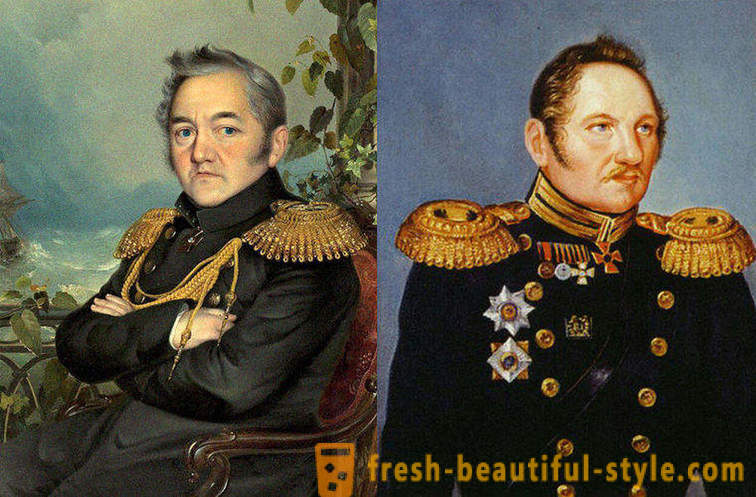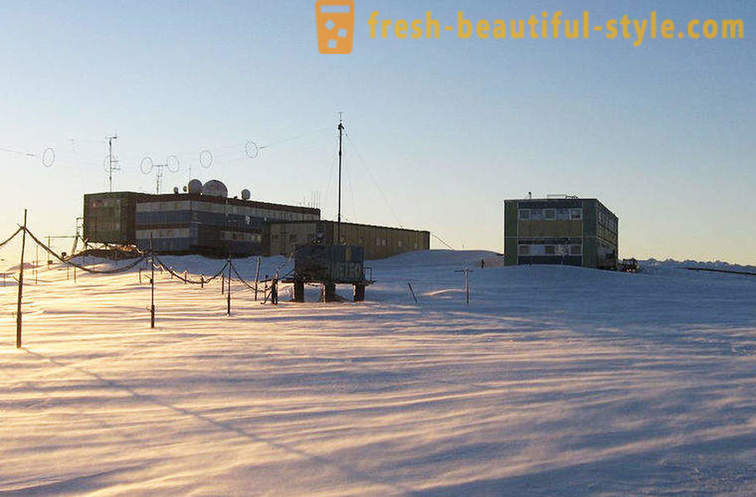The history of the development of mysterious Antarctica
Little-known facts from the history of the development of the most mysterious continent of the planet.
The first map of

In 1513, the Ottoman admiral and cartographer Piri Reis on several pieces of a gazelle skin drew a map of the world, which not only caused the outlines of the Americas, but also in Antarctica. After sailing of Columbus was only 20 years old, and, of course, the results of this expedition could not serve as the primary source for the Piri Reis. However, the admiral himself admitted that he compiled his map from several older cards that were kept in the lost Library of Alexandria. The biggest mystery of this card is not even in the fact that it displays up to the last detail the coast of Antarctica, and that it is depicted in such a way as if there are no kilometer thick ice. Modern science is only in the 1950s found the outlines of this ice continent. It turns out that the ancient mariners saw Antarctica without ice?
There is a theory, according to which about once every 10 000 -20 000 years there is a shift of the crust relative to the poles. mass of ice in the polar caps of the planet exceeds the critical level, and all the Earth's lithosphere, lost her balance and begins to slide on the soft surface of the inner layers. Ice fields are in warmer places, and slowly melting, and at the poles at that time formed a new arctic region. Perhaps before we miraculously reached Map previous civilizations that lived even before Antarctica was at the south pole of the planet ...
More information can be found in the books of Charles Hapgood's "Maps of the Ancient Sea Kings" and "shifts the Earth's crust: the key to some of the basic problems of Earth Sciences." Preface to the latter, incidentally, were written by Albert Einstein! (However, the rest of the scientific world the works of the author are not supported, and the theory of shifting the poles have so far listed in the marginalized science.) Currently, the Piri Reis map is stored in the library of the Topkapi Palace in Istanbul, and the fragments were portrayed on Turkish banknotes in 1999-2009 years.
Terra Australis

The ancient Greek geographers, too, knew of the existence of an unknown southern land. They called it Terra Australis Incognita. The term "Antarctica" as the opposite word "Arctic" was first used in the II century BC. e. Ancient Greek scientist Marinus of Tire, the founder of mathematical cartography, the one who introduced the concept of geographic latitude and longitude.

To reach the shores of this land, and tried unsuccessfully to Dias and Magellan and Tasman, but targeted searches for Antarctica only began in the XVII century. First coming approaches to it have been studied. So, in 1675, Englishman de la Roche discovered the island of South Georgia, the French Jean-Baptiste Bouvet and Yves-Joseph Kerglen in 1739 and in 1772 respectively opened on the approach to the island of Antarctica, named after them, but then could not pass because of ice.
Furthest to the south advanced James Cook during his voyages of 1772-1775's. On the sloop "Rezolyushen" he sailed around Antarctica several times crossed the Antarctic Circle, reaching a record high of 71 ° 15 'south. . M, and made a resolution: "The land that may be in the south, will never be investigated, as this country is doomed to the eternal nature of the cold." Modern researchers have estimated that Cook did not reach the coast of Antarctica just 75 miles.
Discoverers

It is believed that Antarctica has opened 16 (28) January 1820 expedition to the Russian military sloops "Vostok" and "Peace", under the command of Thaddeus Bellingshausen and Mikhail Lazarev. On this day, they have stuck to the ice shelf in Queen Maud Land at 69 ° 21 '28 "w. W. And 2 ° 14' 50" W. d. and saw through binoculars, "the coast of Antarctica" (now this place is called the Princess Martha Coast, with him in the ocean down the ice shelf Bellingshausen). Here he Bellingshausen that wrote on this subject: "I refer to the acquisition of these things the shore because the distance to the other end of the sub-gone beyond the limit of our ... The sudden change of color on the surface of the sea gives the idea that the beach is vast." But what is surprising: the British believe that Antarctica was opened by Edward Bransfild in January of 1820, the Americans - that did Nathaniel Palmer in November of 1820, and the Dutch - that their fellow countryman Dirk Gerritts back in 1599! One thing is certain: none of them on the coast of Antarctica did not come out, they only saw the "land" somewhere out there, far away on the horizon.
The first inhabitants of

In our time on the coast of Antarctica has repeatedly found the remains of galleons XVI-XVII centuries, but it is unlikely that these ships were there under their own power. Most likely, they are washed ashore by storms. But the first time that man set foot on the land of Antarctica, documented. It was the leg of John Davis, an American whaler. And it happened February 7, 1821. Sloop "Cecilia", captained by Davis, went into the Gulf of Hughes in the northern part of the Antarctic Peninsula, and within a few days, his team was resting on the shore.

Zimove Borchgrevink at Cape Adare. © Rolf Stange-Oceanwide Expeditions
The first successful winter in 1899-1900 years in Antarctica held Norwegian expedition of ten people, headed by Carsten Borchgrevink. At Cape Adare of two wooden houses were built: one residential, the other was used as a warehouse. They had 70 dogs, in which members of the expedition to explore the area. In particular, they first reached 78 ° 50'S. w., to determine the position of the South Magnetic Pole and discovered several new species of animals and plants. On his return Borchgrevink wrote the book "First on the Antarctic continent," which was released in 1901. In 1958, it was published in the Soviet Union under the name of "We the South Pole. Year 1900 ". By the way, the first Soviet polar explorers arrived in Antarctica until 1956. January 6 on the coast of the Davis Sea expedition under the (now Truth Coast) guidance oceanographer Mikhail Somov was founded the village of Mirny, which to this day is the largest Russian Antarctic base.

Some facts about Antarctica. Here, the lowest temperature in the world and the largest reserves of fresh water. The strongest and most sustained winds. Lowest relative humidity. The most intense solar radiation. The greatest height above the ocean.













































